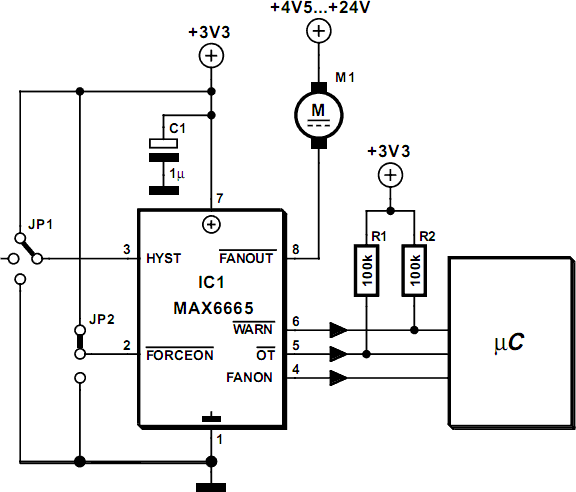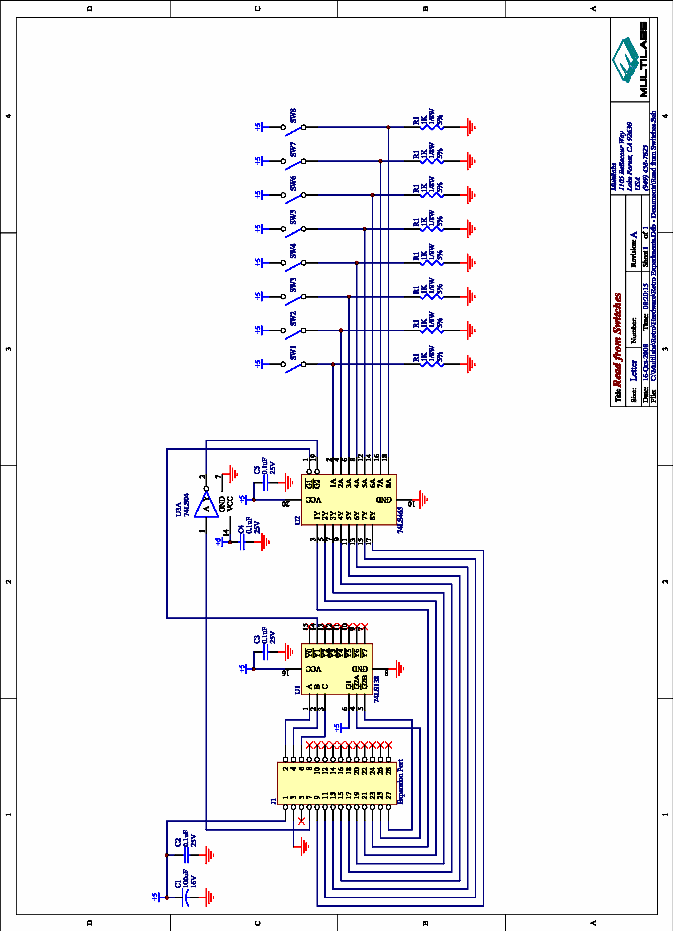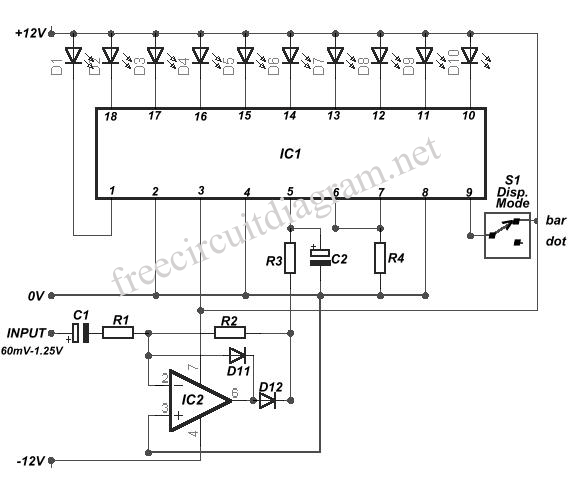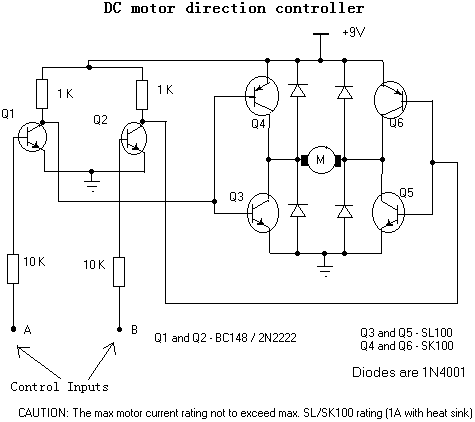
Fan Controller Using Just Two Components

The Maxim MAX 6665 provides a complete temperature-dependent fan controller. It can switch fans operating at voltages of up to 24 V and currents of up to 250 mA. The IC is available from the manufacturer in versions with preset threshold temperatures between +40 °C (MAX6665 ASA40) and +70 °C (MAX6665 ASA70). The device's hysteresis can be set by the user via the HYST input, which can be connected to +3.3 V, connected to ground, or left open. The following table shows the hysteresis values available:
The Maxim MAX 6665 is an integrated circuit designed to manage fan speed based on temperature readings, thereby optimizing cooling efficiency in various electronic applications. This device is capable of controlling fans that operate with a maximum voltage of 24 V and can handle current loads of up to 250 mA, making it suitable for a wide range of cooling solutions in computer systems, industrial equipment, and HVAC applications.
The MAX 6665 is available in different versions, each with specific preset threshold temperatures. The MAX6665 ASA40 is configured to activate the fan at +40 °C, while the MAX6665 ASA70 activates at +70 °C. This flexibility allows users to select the appropriate version based on their thermal management requirements.
The hysteresis feature of the MAX 6665 is a crucial aspect that prevents rapid cycling of the fan, which can lead to wear and noise. The hysteresis can be adjusted by the user through the HYST input. This input can be connected to +3.3 V, ground, or left unconnected, providing three distinct options for setting the hysteresis level. The table of hysteresis values, which is not provided in the original input, would typically outline the specific temperature differentials that can be achieved with each configuration.
In summary, the Maxim MAX 6665 is a versatile and efficient solution for temperature-controlled fan management, offering various operational parameters tailored to specific application needs. Its user-configurable hysteresis feature enhances its adaptability, ensuring reliable performance in temperature-sensitive environments.The Maxim MAX 6665 ( provides a complete temperature-dependent fan controller. It can switch fans operating at voltages of up to 24 V and currents of up to 250 mA. The IC is available from the manufacturer in versions with preset threshold temperatures between +40 °C (MAX6665 ASA40) and +70 °C (MAX6665 ASA 70). The device`s hysteresis can be set by the user via the HYST input, which can be connected to +3. 3 V, connected to ground, or left open. The following table shows the hysteresis values available: 🔗 External reference
The Maxim MAX 6665 is an integrated circuit designed to manage fan speed based on temperature readings, thereby optimizing cooling efficiency in various electronic applications. This device is capable of controlling fans that operate with a maximum voltage of 24 V and can handle current loads of up to 250 mA, making it suitable for a wide range of cooling solutions in computer systems, industrial equipment, and HVAC applications.
The MAX 6665 is available in different versions, each with specific preset threshold temperatures. The MAX6665 ASA40 is configured to activate the fan at +40 °C, while the MAX6665 ASA70 activates at +70 °C. This flexibility allows users to select the appropriate version based on their thermal management requirements.
The hysteresis feature of the MAX 6665 is a crucial aspect that prevents rapid cycling of the fan, which can lead to wear and noise. The hysteresis can be adjusted by the user through the HYST input. This input can be connected to +3.3 V, ground, or left unconnected, providing three distinct options for setting the hysteresis level. The table of hysteresis values, which is not provided in the original input, would typically outline the specific temperature differentials that can be achieved with each configuration.
In summary, the Maxim MAX 6665 is a versatile and efficient solution for temperature-controlled fan management, offering various operational parameters tailored to specific application needs. Its user-configurable hysteresis feature enhances its adaptability, ensuring reliable performance in temperature-sensitive environments.The Maxim MAX 6665 ( provides a complete temperature-dependent fan controller. It can switch fans operating at voltages of up to 24 V and currents of up to 250 mA. The IC is available from the manufacturer in versions with preset threshold temperatures between +40 °C (MAX6665 ASA40) and +70 °C (MAX6665 ASA 70). The device`s hysteresis can be set by the user via the HYST input, which can be connected to +3. 3 V, connected to ground, or left open. The following table shows the hysteresis values available: 🔗 External reference





